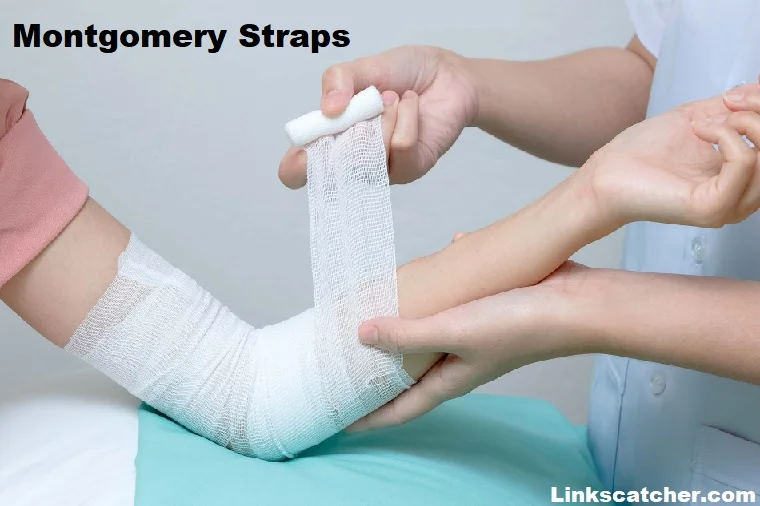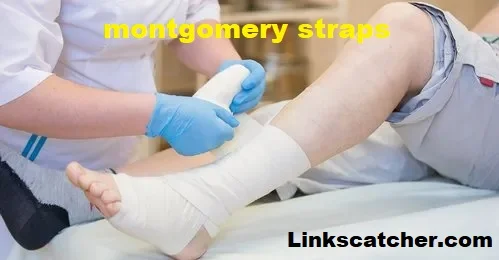
When it comes to wound care, the right tools can make all the difference. Enter montgomery straps an unsung hero in the world of medical supplies. These innovative devices provide secure attachment for dressings while ensuring comfort and flexibility for patients. Whether you’re a healthcare professional or simply looking to learn more about effective wound care, understanding montgomery straps is essential.
But what exactly are they? How do they work? And why should you consider them over traditional options? This guide will unravel everything you need to know about these remarkable straps—from their features and advantages to tips on selecting the appropriate tape and avoiding common pitfalls. Let’s dive into this comprehensive exploration of montgomery straps and give your wound care routine a boost!
Montgomery Straps
Montgomery straps are specialized medical devices designed to secure dressings over wounds. Unlike traditional tape, they provide a more flexible and comfortable option for patients. These straps consist of two pieces: the adhesive portion that attaches to the skin and the strap itself, which holds the dressing in place without causing irritation.
One significant advantage of montgomery straps is their ease of use. Healthcare professionals can apply them quickly and efficiently, making them ideal for busy clinical settings. Their design allows for frequent dressing changes without repeated adhesive application, reducing trauma to sensitive skin.
Additionally, these straps are adjustable, ensuring that they can accommodate various body shapes and sizes. This adaptability makes them suitable for different types of wounds and patient needs, providing both stability and comfort throughout the healing process.
Montgomery straps also enhance airflow around the wound site while minimizing movement restriction. This feature not only aids in quicker recovery but also contributes to overall patient satisfaction by allowing greater freedom of movement during treatment.
Features of Montgomery Straps
Montgomery straps are a versatile solution for securing dressings and bandages. Designed primarily for post-surgical care, they provide stability without compromising circulation. Their unique design allows them to accommodate various wound sizes, making them suitable for a wide range of patients.
One notable feature is their ease of use. The adjustable nature of these straps means healthcare providers can quickly apply or remove them as needed. This adaptability is crucial in medical environments where time is often of the essence.
Advantage of Montgomery Straps
Another advantage lies in patient comfort. Montgomery straps reduce the risk of skin irritation caused by traditional adhesive tapes. They distribute pressure evenly across the skin, minimizing discomfort and enhancing compliance during recovery.Moreover, they help promote proper healing by allowing air circulation around the wound site while keeping it protected from external contaminants. This balance between security and breathability makes montgomery straps an essential tool in effective wound management strategies.
Selecting the Right Medical Tape

Choosing the right medical tape is crucial for effective wound care. With various options available, it’s important to consider factors like adhesive strength, flexibility, and breathability. Each type serves a different purpose and suits specific needs.
For example, hypoallergenic tapes are ideal for individuals with sensitive skin. They minimize irritation while providing a strong hold. If you’re dealing with active wounds that require frequent dressing changes, opt for gentle adhesives that won’t damage the skin upon removal.
Immobilization for Injuries
On the other hand, if you need extra support or immobilization for injuries like sprains or strains, look into cohesive bandages or elastic tapes. These options offer flexibility without compromising stability.
Don’t forget about moisture control! Tapes designed to be water-resistant can help protect your wound from external elements during bathing or swimming activities. Taking these aspects into account will ensure you select the most suitable medical tape for your needs and enhance healing outcomes effectively.
Clean It, Irrigate It
Cleaning your wound properly is crucial for effective healing. It minimizes the risk of infection and promotes faster recovery. Use a gentle soap and clean water to rinse away any dirt or debris that may have settled in the area. Avoid harsh chemicals, as they can irritate sensitive skin.
After cleaning, irrigation plays a vital role in ensuring thorough cleansing. A saline solution works wonders for flushing out bacteria and contaminants without causing discomfort. You can easily find saline solutions at your local pharmacy or make one at home by mixing salt with sterile water.
Taking these steps will not only enhance the healing process but also reduce pain associated with inflammation and infection. When wounds are clean, your body can focus more on repairing itself rather than fighting off germs.
Experience less Pain
Remember to be gentle during this entire process. Rushing through it might lead to additional trauma to the tissue, which could cause more pain later on. Patience is key when caring for wounds; every moment spent taking care now pays off down the road.
Oops!! Avoiding Common Wound Care Mistakes
Wound care is crucial for recovery, yet many people make common mistakes that can hinder healing. One of the biggest errors is neglecting to clean the wound properly before applying a dressing. Dirty hands or unclean surfaces can introduce bacteria, increasing the risk of infection.
Another frequent oversight involves using inappropriate dressings. Not all wounds require the same type of coverage; choosing a non-adhesive option like montgomery straps could be more beneficial for larger areas or sensitive skin. The right choice promotes better airflow and comfort while protecting against potential contaminants.
Some individuals also forget to change their dressings regularly. Keeping an eye on your wound’s condition is vital—if it appears wet, dirty, or has started to smell, it’s time for a change. Allowing old bandages to stay in place too long can trap moisture and create an environment ripe for infections.
Don’t skip follow-up appointments with your healthcare provider. Regular check-ups allow professionals to assess healing progress and offer tailored advice on maintaining optimal wound care practices moving forward.
Product Overview of Montgomery Strap 8-Hole Cased
The montgomery straps 8-Hole Cased is a versatile option for those in need of effective wound care solutions. Designed to provide secure anchorage for dressings, these straps offer convenience and comfort during the healing process.
Each strap features eight holes, allowing for adjustable placement based on individual needs. This customization ensures that patients can experience less discomfort while still maintaining optimal dressing integrity. The durable material used in these straps provides not only strength but also breathability—an essential factor in preventing irritation and promoting healthy skin.
Strap 8-Hole Cased
Whether you’re a healthcare professional or managing your own wounds at home, the Montgomery Strap 8-Hole Cased stands out as an indispensable tool. It simplifies dressing changes and reduces stress on sensitive areas of the body, making it easier to focus on recovery rather than discomfort related to wound care.
With their reliable performance and user-friendly design, montgomery straps are truly a game-changer in wound management practices. Embracing this innovative approach could mean more effective treatment outcomes and enhanced overall patient satisfaction throughout the healing journey.